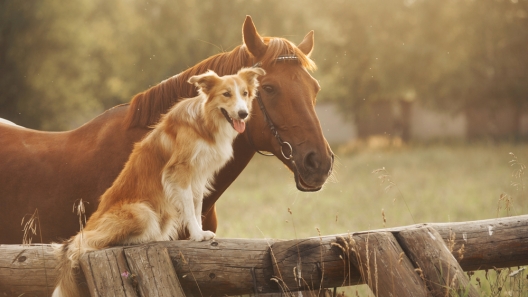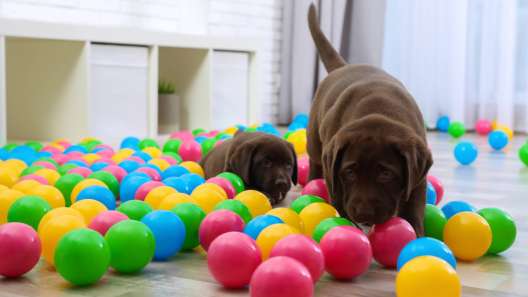-
Activity Level:
high
-
Shedding Level:
high
-
Grooming Level:
low
-
Trainability:
high
-
Good for Novice Owners:
high
-
Adaptability:
high
-
Kid/Pet Friendly:
often
-
Prey Drive:
low
-
Watchdog:
aware
- Average Size: Medium
- Average Lifespan: 11-13 years
- Registered?: aca, akc
Chocolate Labrador Retriever Dog Breed Information
Overview
Temperament
Adaptability
Health
Owner Experience
Grooming
Activity Level
Size
Life Span
Did You Know?
Labrador Retrievers are one of the most popular dog breeds. The Chocolate Labrador Retriever is not a distinct dog breed from other Labs, but it is a separate coat color variation that is specifically bred for. Similar to the other standard coat colors of Labrador Retrievers, Chocolate Labs are energetic dogs that get along well in a family setting.
As a Retriever, they also make great hunting dogs and have also been known to fill other working dog roles including service dogs, guide dogs, search-and-rescue dogs, and more. They are even one of the common dog breeds employed in K-9 units. A point of interest is that all modern Chocolate Labrador Retrievers can be traced to three specific Black Labradors that lived during the 1880s.
Chocolate Labs are industrious and curious little pups. They were bred for retrieval and will often sniff about for something to get into. They are also one of the most affectionate dog breeds and absolutely love being with their favorite humans.
Properly socialized and well-trained, Labs are one of the kid-friendly dog breeds. They get along well with children, other dogs, and other pets. They are famously even-tempered and playful. This makes them fantastic dogs for a growing family, as they tend to be gentle and patient with little ones. Plus, they’ll love the extra attention and people available for cuddling or playtime.
They can have a high prey drive. They usually do well with small pets within the family that they have been raised with or socialized around, but likely will still have the urge to chase other animals while out and about. They also tend to be open and friendly with strangers. After all, strangers are just more people to give them attention and play with them.
Chocolate Labrador Retrievers may be high-energy dogs, but they are also highly adaptable. They will thrive in homes with fenced yards where they can run freely. They can adapt well to apartment living as well as long as they get plenty of daily exercise, attention, and mental stimulation.
Their natural urge to dig and bark when they are bored or agitated can be quelled with a little training and exercise. Although they can handle some alone time, Labs love to be with their families and thrive on attention from them, so they do not like to spend long periods of time alone.
Chocolate Labs also have a water-resistant double coat that makes them well-suited for most habitable climates. As with most dogs, they are sensitive to heat. Although they can handle some cold and will likely love to play in the snow, they are not a snow dog breed and may need to bundle up while out on walks in areas with harsher winters.
Potential health concerns to be aware of in a Chocolate Labrador Retriever can include hip dysplasia, elbow dysplasia, progressive retinal atrophy, cataracts, and hereditary myopathy. There is also a condition with a genetic link called exercise-induced collapse (EIC), which can occur in young adult Labradors. Carriers of this can be identified by DNA tests and it is advised that breeders test for this and avoid practices that would produce the disease.
Good breeding practices make a big difference in the health of Chocolate Lab puppies and reputable breeders will screen their dogs to avoid passing preventable issues to puppies. Make sure you ask about the health and genetic history of both parents and about any health tests or clearances that have been done. The National Breed Club recommends a hip and elbow evaluation, an EIC DNA test, and an ophthalmologist evaluation at a minimum.
As a large, deep-chested dog breed, Labrador Retrievers are at a higher risk for bloat. Bloat in dogs can be dangerous and can quickly become fatal if the stomach flips (i.e., gastric torsion occurs). Because of this, it’s important to know how to reduce the risk and what symptoms to look for so you know when to get help.
Chocolate Labrador Retrievers are incredible companions and are also one of the best dog breeds for first-time owners. Their energy can make them a handful at times, but their intelligence, adaptability, patience with people, and eagerness to please make them easy to train.
Labs are one of the smartest dog breeds, so they pick up on things easily. As long as training is consistent and focused on positive reward and praise, a Chocolate Lab will do their best to respond as expected and will often exceed expectations.
Chocolate Labs have a short, water-resistant coat that will shed year-round. It’s a double coat, so they will shed heavier as seasons change. Brushing a few times a week, daily brushing during seasonal shedding, and the occasional bath is all that is needed to keep a Lab coat healthy and looking great. They may need baths more often if they are avid swimmers, go on a lot of outdoor adventures, and get dirty a lot.
In addition to coat care, you will also need to take care of your Chocolate Labrador Retriever’s nails, ears, and teeth. Long nails can cause issues, but trimming your dog’s nails once or twice a month is usually enough to keep them the right length. Floppy ears tend to trap dirt, moisture, and debris. So, checking your Lab’s ears weekly and carefully cleaning them as needed can help prevent ear infections.
Proper dental care for dogs is imperative to help prevent painful dental diseases like gum disease or tooth decay later in life. Brushing your dog’s teeth or using an enzyme toothpaste every day, along with dental cleanings at the vet when needed, will help prevent the tartar buildup that leads to dental disease. You can also supplement your dental care efforts with vet-approved dental hygiene chews.
Labrador Retrievers are one of the most active dog breeds and need a lot of daily activity to be happy and healthy. Daily walks plus playtime, time to run, and other activities are usually enough, but your Chocolate Labrador will likely be up for more activity if you are.
They will mellow out a little bit as they get older, but you’ll have to wait until they are more than 2 years old. One of the facts about Labrador Retrievers is that they have an extended puppyhood and tend to maintain that puppy-like energy and maturity until they are 2-3 years old.
It’s also recommended to keep activities lower impact until your Lab’s bones are done growing and developing. Swimming can be a great lower-impact activity and Labrador Retrievers are one of the dog breeds that tend to love water. Between that, their water-resistant coat, and webbed toes, you may have trouble getting your Chocolate Lab out of the water!
Fully-grown Chocolate Labrador Retrievers usually stand 21-25 inches tall and weigh 55-80 pounds.
Chocolate Labs generally live for 11-13 years on average.
The British Kennel Club first recognized the Labrador Retriever in 1903. Fourteen years later, the American Kennel Club did the same in 1917.









